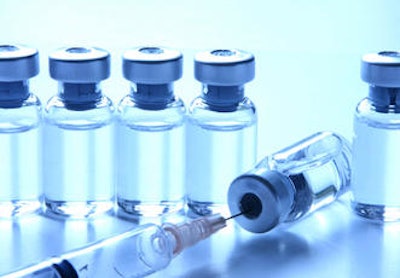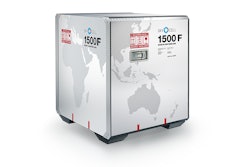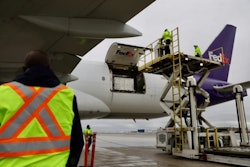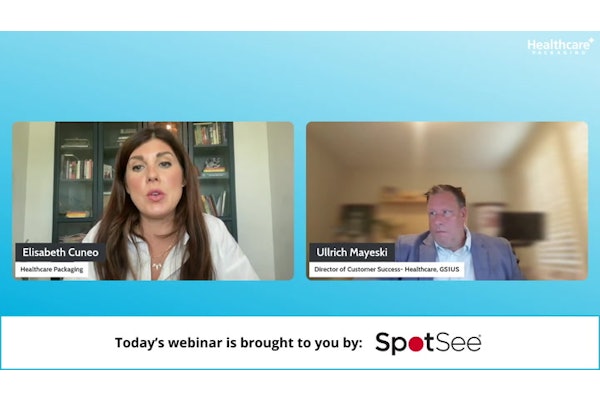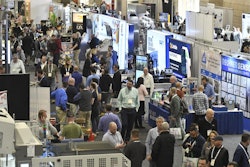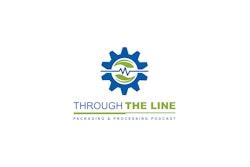This Q&A Part 2 is a portion of a longer vaccine logistics podcast with Keren Sookne, covering cold chain capacity, traceability and a lot more. Visit this link to listen to the full episode.
To read Part 1, click here.
SR: Has the healthcare packaging and processing industry done anything supplier-wise to step up this year to help out with these efforts?
KS: Definitely. I feel like nearly everybody in this industry has really stepped up in some way. There's been tons of overtime and manufacturing and pivoting with modifying machines and things like that. I know Cold Chain Technologies and Aphena have opened new facilities with cold chain storage and Pelican has expanded its deep-frozen line of shippers to meet the needs of these ultra-low temperature products. And Lifoam was recently awarded patents for its bio-based alternative to traditional EPS packaging Styrofoam–this one’s not so much related specifically to COVID-19, but at the same time, when we talk about how much the entire pharma cold chain is stepping up to meet these needs, we also have to think about how, even if you're not personally shipping vaccines, your cold chain is being affected because there's really only so much capacity for cold chain storage, packaging, and shipment.
So you really have to look ahead and plan out to ensure that your product is still going to get its spot on those trucks and planes and have the packaging that it needs. I also think it’s cool that we're seeing cold chain packaging coming from renewable materials now, which will help the supply of packaging moving forward.
SR: As this pandemic has unfolded, consumers have realized how essential food packaging has been. We haven’t been taking into consideration that this vaccine has to be in a box, it has to have Styrofoam, it needs vials. It needs to have all those things, which weren't being budgeted for, because again, a year ago we didn't know any of this was happening.
KS: All that supply has to come from somewhere. This is just my own personal conjecture, but I was even curious about at what point needing vials and glass could affect our wine and beer industry.
SR: Yes, these are very trying times and people need to relax. So, I agree. That's a very good point.
KS: That reminds me of another story that we covered. A company named BSP was supposed to receive a machine from Winpak Lane, but they actually let a company go ahead of them in line to receive a machine because that company needed to produce refrigerant mats for COVID-19 vaccine shipments in a hurry. I thought it was nice to see that companies are willing to step aside and say, "Yes, we'll put off our needs because public health needs those refrigerant mats." And I'm sure there's probably so many stories like that under the surface that are happening every day, where people are making decisions that help others and help public health in this global fight.
SR: What has evolved once the vaccine hit the supply chain? What things worked or didn't work, or what things had to adapt on the fly? Could you kind of put some perspective around that?
KS: I think one of the really interesting things that we've seen in the last couple of weeks—both on a big and a small scale—is people are moving ahead with doling out as many of the first dose as possible instead of holding onto the second dose on reserve for someone who has already received round one.
I learned of a very small clinic by me in L.A. where this doctor is just on a mission to get as many first doses out to as many healthcare workers as possible because he's really worried about the healthcare workforce in L.A., especially as a hotspot. So, in some cases, these clinics are making decisions where they say it's better to get more people to that 80% efficacy level than to have half that number reach the 96% efficacy level.
But then on the flip side of that, I know that on a grander scale, there are countries [and at the time of recording, the U.S. was one of them[ saying to give out as many first doses as possible because there was confidence that that second dose would be there in the three weeks when it's needed. So, you see it from kind of two sides. On the one hand, this clinician says, "Well, if the second dose isn't available, at least we got you to 80%." And then on the other side, you see countries saying, "Hey, we're sure that the second dose is going to come."
[Update: Since recording the podcast, news was released that the HHS changed its explanation about its confidence in vaccine supply for second doses, and acknowledged that they cannot anticipate a large supply of second doses will be ready in the expected time frame—three weeks later (for Pfizer) and four weeks (for Moderna).]
Also, something that we're seeing in terms of the supply chain, especially what we saw in spring with hotspots, are drug shortages. So, there have been efforts by quick-thinking pharmacists and organizations like CivicaRX who are working really hard to ensure the supply of drugs that are used to help treat the effects of COVID-19 and that help people on ventilators. Organizations and health systems have learned so much from the situation in spring and summer and have tried to get to a place before this winter surge where there weren't going to be as many drug shortages, especially for very necessary, but low-cost drugs that we've seen shortages of in the past as well. I just wanted to acknowledge those efforts in making sure that patients have what they need, even when there are these big surges.
SR: It's such a massive effort that's happening. And it has such an effect and ramifications on the supply chain. It even makes me think of how e-commerce exploded in the last year because we're all ordering from home. But then as people realized around the holidays that the post office and UPS and FedEx just couldn't deal with the dramatic increase as it taxed their supply chain. There has to be some negative effects that this vaccine or pandemic is having on the cold supply chain that we use. I know you and I have talked about some but is there some that you could share with us again? We're not trying to be dire, but things have obviously had to be affected by this, things had to be sacrificed kind of to make this cold supply chain work in order to vaccinate so many people.
KS: There is something that I did want to talk about. I wouldn't say that this is necessarily the fault of the vaccine, but more of just a natural effect of this pandemic. I don't want to say this lightly at all, this is obviously a very serious thing, but part of the life science cold chain’s responsibility is to move people who have suffered fatalities.
And as we've seen there are hotspots, particularly, I believe in the Midwest where they have exceeded their capacity of refrigerated storage and trucks. I believe it was Acela Truck Co. that has retrofitted trailers that can be pulled by an SUV or a pickup. So, you don't need these specialized trucks in order to ensure that people are getting where they need to go in a safe manner so it’s not a public health risk and doesn't delay their storage or transportation. It just points to the really dire and serious nature of what we're all going through, and as they're referred to the “last responders”—morticians and jobs like that. They are dealing with something they've never dealt with in their lives.
They're completely overwhelmed by just the sheer volume of people. It's important to acknowledge that that is also a piece of the cold chain that's being affected and stretched to its capacity. I really feel for everybody who's working in healthcare and those last responders, because it's got to be really trying.
